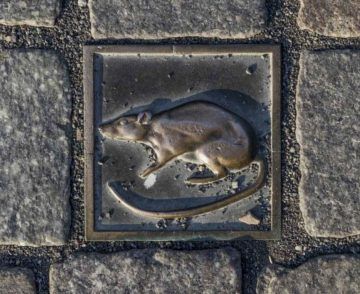Jonathan Richardson in Undark:
 It took only a few seconds to spot one. Then another. As I walked into the small park around noon, dozens of rats could be seen scurrying in every direction. They dashed in and out of burrows scattered around the planting beds. They scampered between the safety of shrub cover and the trash bins containing a smorgasbord for them to feed on. They leaped on and off the unoccupied benches encircling the park. The rats of Churchill Square had returned.
It took only a few seconds to spot one. Then another. As I walked into the small park around noon, dozens of rats could be seen scurrying in every direction. They dashed in and out of burrows scattered around the planting beds. They scampered between the safety of shrub cover and the trash bins containing a smorgasbord for them to feed on. They leaped on and off the unoccupied benches encircling the park. The rats of Churchill Square had returned.
I study urban rats, but this tiny park in New York City — at the intersection of Bleecker Street and 6th Avenue in the Greenwich Village section of lower Manhattan — has been a side curiosity of mine. The first time I visited the square, I was just looking for a place to sit for a few minutes during a family excursion.
But an urban ecologist is never really off the clock in the city. I had never seen so many rats in such a small area. Rats are generally nocturnal, so the high activity during daylight probably meant the infestation was severe, which increases the risk of disease transmission to people, damages urban infrastructure, and even takes a toll on the mental health of residents. The health, economic, and social impacts of rat infestation can be significant.
More here.
